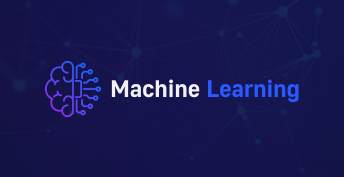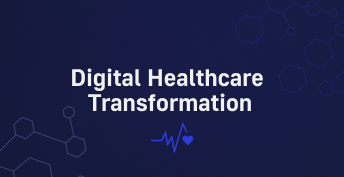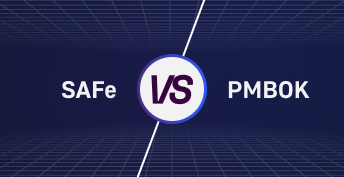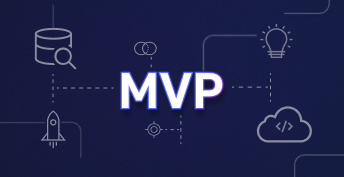GitOps is an infrastructure and development process management methodology based on Git and DevOps principles. The basic idea behind GitOps is to use Git as the single source of truth for all infrastructure and application changes.
GitOps relies on the idea that that the state of the entire system, including infrastructure and applications, should be described in a Git repository. When changes are made, they are committed as code and sent to the Git repository. A dedicated operator (e.g. Flux, Argo CD) then monitors the changes in the repository and automatically applies them to the runtime environment.
This is considered a trend in DevOps for several reasons:
- Declarative and version control: Using Git for infrastructure state management provides a declarative approach, allowing you to describe the desired state of the system and track changes through version control.
- Automation: GitOps is heavily based on automation. It allows infrastructure and application changes to be automatically applied based on changes to the Git repository, speeding up the delivery process.
- Configuration management: GitOps allows you to centrally manage the configuration and state of your entire system, ensuring uniformity and consistency across environments.
- Maintain and rollback: Using Git for state management makes it easy to restore previous states and perform rollbacks when necessary.
- CI/CD integration: GitOps integrates well with CI/CD processes, allowing changes to be automatically delivered and deployed with every commit to the repository.
Advantages of this approach: let’s take a closer look at the main aspects
Declarative approach and version control:
- GitOps offers a declarative approach to infrastructure management, which means that you describe the system’s desired state in the form of code or configuration.
- This code or configuration is stored in a Git repository, providing version control and change history.
- By using version control in Git, every change is tracked, and the change history makes it possible to view previous versions and restore previous system states.
Automation:
- One of the main goals of GitOps is to automate the process of infrastructure and application management.
- Once changes are made to the Git repository, specialized operators or controllers (e.g. Flux, Argo CD) monitor the repository and automatically apply the changes to the appropriate environment.
- This reduces manual work and potential errors in deploying and managing applications and infrastructure.
Configuration Management:
- GitOps provides a centralized and uniform way to manage configuration for the entire system.
- All configurations required to deploy and manage applications and infrastructure are stored in a Git repository.
- This simplifies the process of scaling, backing up and restoring the system, as all configuration is stored in one place and can be easily restored when needed.
Maintenance and rollback:
- With version control in Git, GitOps makes it easy to restore previous system states or perform rollbacks in case of failed changes.
- If the changes result in errors or undesirable consequences, you can simply roll back to a previous version in Git, ensuring a stable and reliable deployment process.
CI/CD integration:
- GitOps integrates tightly with Continuous Integration (CI) and Continuous Delivery (CD) processes.
- Once changes are made to the Git repository, the CI/CD system can automatically start testing, building, and deploying the application using GitOps-specific tools (e.g. Flux, Argo CD).
This allows developers to quickly and securely deliver changes to the production environment each time they commit to the repository.
Disadvantages of using GitOps methodologies
While GitOps provides many benefits, including simplified infrastructure and deployment management, there are some disadvantages:
Git repository dependency:
- Git is a critical point of failure in GitOps. If there are problems accessing the repository or other issues with it, it can slow down or completely stop the deployment and infrastructure management process.
Security:
- Storing configuration and secrets in a Git repository can be a security issue. Even if the repository is private, there is a risk of sensitive information leaking out.
- Special attention should be paid to managing access to the repository and encrypting sensitive data.
Complexity for large systems:
- For small projects, GitOps can be relatively easy to implement and maintain. However, for large and complex systems, it may require significant effort to build and maintain infrastructure, automation, and version control.
Potential for conflicts:
- When multiple branches are reconfigured at the same time, or when deploying changes that are incompatible with each other, a conflict can arise that will complicate or even block the deployment process.
Managing and versioning large files:
- Git is not optimized for managing large files or large amounts of data. In case your infrastructure includes large files (such as Docker images), this can cause performance and repository size issues.
Difficulty rolling back changes:
- Rolling back changes in Git can be non-trivial in some cases, especially if the changes affect multiple system components or if they have already been applied in a production environment.
Despite these drawbacks, many teams find GitOps to be a useful and effective method of infrastructure management and application deployment, especially when properly implemented and using additional tools for security and scalability.
A set of helpers: what can be useful for GitOps implementation
Additional tools for the GitOps methodology may include:
Flux:
- Flux is a tool for automatically deploying and managing applications and infrastructure using GitOps.
- It integrates with Kubernetes and provides automatic updates to Kubernetes resources based on changes to the Git repository.
Argo CD:
- Argo CD is a tool for continuous deployment and management of applications on Kubernetes using GitOps.
- It provides automatic deployment of applications based on configuration stored in Git and provides an interface to track deployment status.
GitLab CI/CD:
- GitLab CI/CD is a continuous integration and delivery tool built into GitLab.
- It can be used in conjunction with GitOps to automatically deploy applications based on changes to the Git repository.
Jenkins X:
- Jenkins X is a continuous delivery tool specifically designed for Kubernetes and the cloud.
- It provides GitOps capabilities to automatically deploy and manage applications on Kubernetes.
Kustomize:
- Kustomize is a Kubernetes customization and configuration management tool that allows you to create and apply multiple template-based configuration files.
- It is often used in conjunction with GitOps to manage application configuration on Kubernetes.
These tools help automate the process of deploying, managing and monitoring applications and infrastructure using GitOps.
Protecting your data in Git: How do you ensure the security you need?
Ensuring security when using the GitOps methodology plays a key role, especially since configuration files, secrets, and other sensitive data are stored in a Git repository.
Here are some methods to ensure security in such an environment:
Storing secrets in a secure repository:
- Sensitive data such as passwords, API keys, and other secrets should not be stored directly in the Git repository.
- Instead, it is recommended to use a secure secrets repository, such as HashiCorp Vault or Kubernetes Secrets, and reference them from configuration files.
Repository access control:
- Access to the Git repository should be strictly controlled to prevent unauthorized access and changes.
- Use Git platform authentication and authorization mechanisms (e.g., GitLab, GitHub, Bitbucket) to control access to the repository and define access rights for users and groups.
Encrypting sensitive information:
- It is important to encrypt sensitive information stored in a Git repository so that it cannot be read in the clear even if the repository is compromised.
- Some GitOps tools and Git platforms provide built-in encryption support for sensitive data.
Monitoring and auditing:
- Implementing monitoring and auditing mechanisms allows you to track activity in your Git repository and quickly detect any anomalies or suspicious activity.
- This can include monitoring changes to the repository, auditing access to the repository, and analyzing detected vulnerabilities or security incidents.
Regular security updates and audits:
- Regularly update GitOps tools and Git platforms to get the latest security patches.
- Conduct regular security audits to identify vulnerabilities and flaws in GitOps configuration and processes.
Conclusion
Overall, GitOps simplifies and speeds up the development, deployment, and infrastructure management process, making it a popular trend in DevOps. In our work, we often use GitOps-based methodologies, using the most appropriate models for each project. For this purpose, not only DevOps engineers use their knowledge, but also developers themselves, who can offer their solutions for optimizing the processes of code builds and deployments to the project. Even test automation on projects is also built on GitOps methodology and uses the interaction of continuous integration systems (e.g. Jenkins) and repositories on GitHub/GitLab.
One such example is our work on the ZUUM project, where all changes and deployment of auto-tests were built on Amazon’s facilities using the solutions mentioned earlier.
At IT-Dimension, we offer a variety of services for planning, development, or support of IT products of various complexity and scope.
Get in touch with us, and we’ll help streamline your project’s development process, choose the right technical stack, create a detailed project roadmap, deliver the solution, and more.
Sources and links:
ttps://shalb.com/blog/gitops-an-introduction-to-gitops-principles-and-practices/
https://codefresh.io/learn/gitops/
https://fluxcd.io
https://argo-cd.readthedocs.io/en/stable
https://docs.gitlab.com/ee/ci
https://jenkins-x.io
https://kustomize.io










